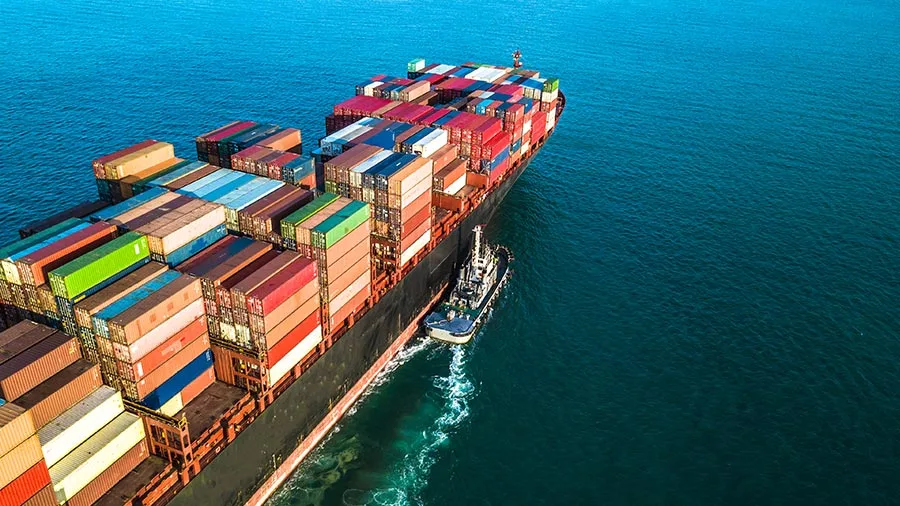03-apr-2025, 01:05 PM
Indian Exporters are likely to face fewer difficulties compared to their global counterparts. While tariff hikes generally create concerns about trade disruptions, India’s unique economic position, strategic trade relations, and diversified export markets could mitigate significant challenges. Experts suggest that while certain industries may experience short-term adjustments, the overall impact on India’s export sector is expected to be relatively mild.
Indian Exporters May Face Fewer Challenges
1. Indian Exports Sectors
Certain sectors that play a crucial role in India’s export industry, such as pharmaceuticals and IT services, have largely been exempted from the recent tariff hikes. The U.S. heavily depends on Indian pharmaceutical companies for generic medicines, and tariffs on these essential products could have adverse effects on American consumers.
Similarly, India’s IT and software services industry remains largely unaffected, as digital services are not subject to traditional tariffs. This ensures that a significant portion of India’s export revenue remains stable.
2. Lower Dependence on the U.S. Market
India’s economy is less export-driven compared to many other Asian nations. While exports contribute significantly to the country’s GDP, they do not dominate economic activity. This reduces India’s vulnerability to external trade shocks like tariff hikes.
Additionally, India has been strengthening trade ties with other nations, including the European Union, the United Arab Emirates, and African countries, helping Indian businesses reduce their reliance on the U.S. market.
3. Competitive Manufacturing Costs
Despite the new tariffs, Indian exporters continue to enjoy a cost advantage in several industries. With competitive labor costs, government incentives for manufacturing, and infrastructure improvements, Indian businesses remain attractive to global buyers. Even with tariffs, many U.S. companies may still prefer to source from India rather than shift production to costlier markets.
4. Diversified Export Markets
India has been actively expanding its trade partnerships with other global economies. Recent trade agreements with the UAE, Australia, and the European Union have opened new opportunities for Indian businesses, reducing dependency on any single country.
With initiatives like the Production-Linked Incentive (PLI) scheme, the Indian government is encouraging domestic companies to expand their global reach, making them more resilient to tariff-related challenges.
Indian Exporters for Potential Challenges
While the overall impact of the U.S. tariffs may be less severe for India, certain industries could still face difficulties.
1. Impact on the Textile Industry
The Indian textile industry exports a significant portion of its products to the U.S. If tariffs increase on apparel and fabric imports, Indian manufacturers may experience cost pressures. Competitors like Bangladesh and Vietnam could gain an edge if their tariffs remain lower.
2. Automobile and Electronics Sectors
Indian automobile component manufacturers and electronic goods exporters could face challenges due to higher tariffs. The U.S. is a major market for these products, and increased costs might lead to reduced demand. However, businesses could explore alternative markets in Southeast Asia and Europe to balance potential losses.
3. Trade Negotiations and Policy Adjustments
India has been engaged in discussions with the U.S. to negotiate tariff relief. If successful, some sectors may receive exemptions or reduced tariffs, further easing potential trade barriers. However, trade policies can be unpredictable, requiring exporters to remain flexible and adaptable.
How Indian Exporters Can Adapt
To navigate these challenges, Indian exporters can adopt several strategic approaches:
1. Strengthening Trade Agreements
By continuing to expand trade relations with other nations, India can reduce reliance on the U.S. market. Agreements like the India-UAE Comprehensive Economic Partnership Agreement (CEPA) and potential trade deals with the UK and EU provide alternative markets for Indian exporters.
2. Enhancing Product Competitiveness
Indian businesses can focus on value addition, innovation, and quality improvement to remain competitive. By adopting modern technologies and improving efficiency, exporters can offset the impact of tariffs and maintain their global appeal.
3. Exploring Digital and E-Commerce Channels
The rise of digital trade offers opportunities for Indian businesses to sell directly to consumers in the U.S. Platforms like Amazon, eBay, and Shopify enable exporters to reach American buyers without relying solely on traditional supply chains. This approach minimizes the impact of tariffs on bulk shipments.
4. Government Support and Incentives
The Indian government has introduced several initiatives to support exporters, including the Remission of Duties and Taxes on Exported Products (RoDTEP) scheme and subsidies for manufacturing expansion. Businesses should leverage these incentives to remain competitive in global markets.
Conclusion
Despite the imposition of new U.S. tariffs, Indian exporters are expected to face relatively fewer difficulties due to India’s diversified trade strategy, competitive manufacturing costs, and exemptions for key sectors like pharmaceuticals and IT services. While industries like textiles and electronics may experience challenges, strategic trade agreements, innovation, and government support can help mitigate risks.
As the global trade landscape continues to evolve, Indian businesses must remain adaptable and explore new markets to ensure sustained growth. With the right policies and strategies in place, India can strengthen its position as a resilient player in international trade.
Source: ANI





